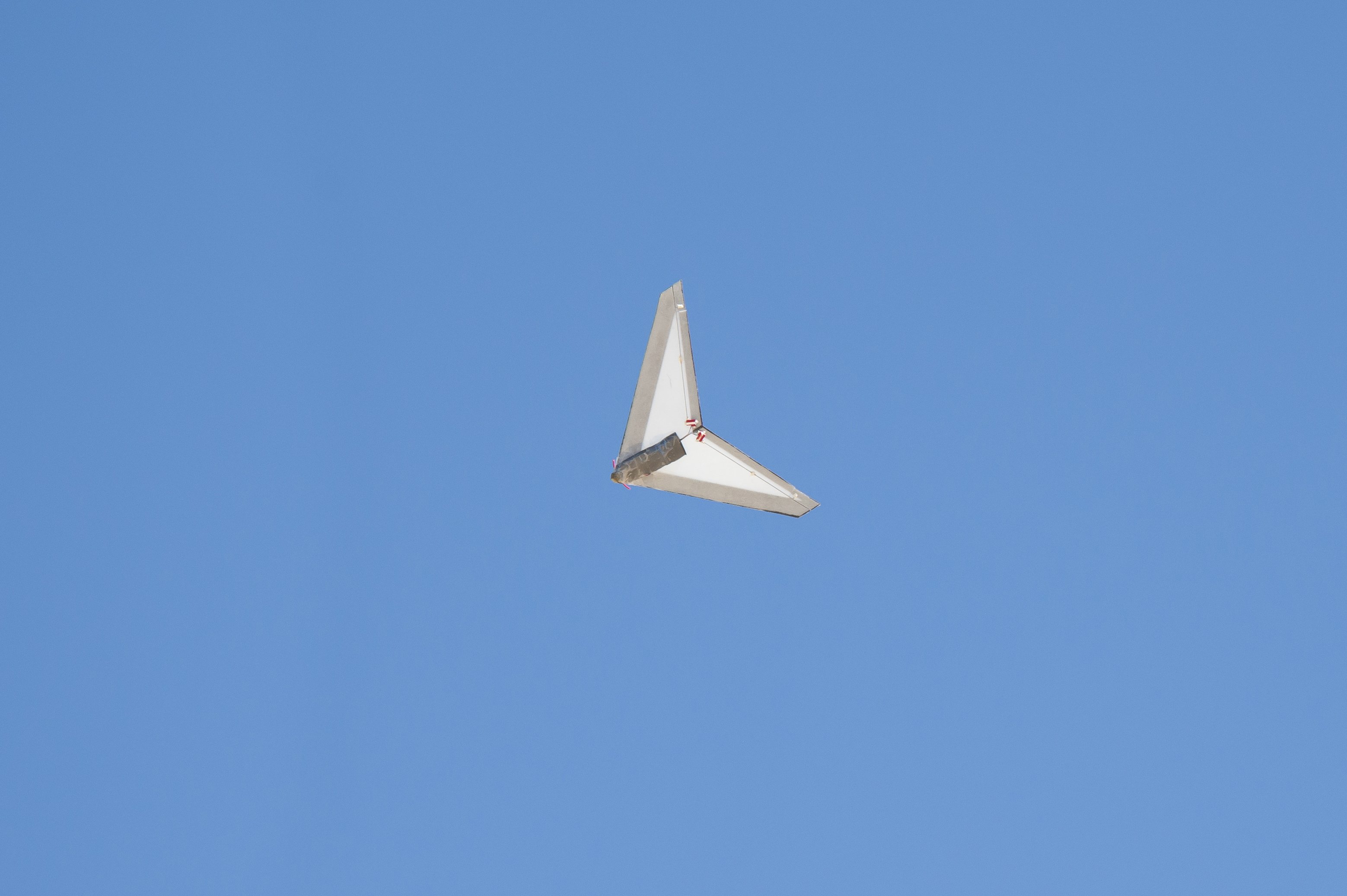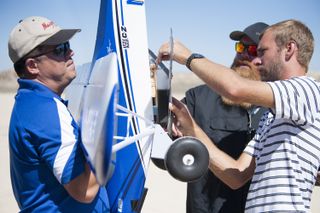This Student-Designed Aircraft Could Fly on Mars One Day

NASA student interns have successfully flown a prototype of a tiny, remotely controlled aircraft that could one day glide through Martian skies and send information back down to Earth.
The group of students, who come from community colleges, spent their summer designing the aircraft at NASA's Armstrong Flight Research Center in Edwards, California. On Aug. 11, they put their design to the test.
Last summer, a different group of student interns initiated the Martian airplane project, dubbed Preliminary Research Aerodynamic Design to Land on Mars (Prandtl-M). This year, the second group of students continued on the project by improving on the design, before ultimately testing its flight capabilities.
"The first successful flights felt like a huge relief," John Bodylski, an engineering student at Irvine Valley College in California, said in a statement. "While we still plan to perfect the design, it is a pretty exciting feeling to realize that the aircraft is working."

To test how the aircraft would perform in Mars' atmosphere, the team attached it to a balloon that carried it to about 100,000 feet (30,500 meters) in altitude. Here, the air is about as thin as it would be in Mars' atmosphere. The aircraft is about the size of a kite, with a wingspan of only 2 feet (0.6 m).
"What we like about small prototypes and this student program is, this is real research, real cutting-edge technology development," said Dave Berger, manager of education activities at NASA Armstrong Flight Research Center.
The students "can work on all the major areas of aerospace engineering, such as controls, aerodynamics, structures and instrumentation, encapsulated in one project," Berger said. "The program is small enough that we can design and fabricate very fast, and we can try something that no one has ever done before," he added.
Get the Space.com Newsletter
Breaking space news, the latest updates on rocket launches, skywatching events and more!
Al Bowers, chief scientist at NASA Armstrong, said the team still has some work to do before the aircraft would be ready to go to Mars, but they hope to see their glider hitch a ride to the Red Planet on the next rover mission, Mars 2020.
Email Hanneke Weitering at hweitering@space.com or follow her @hannekescience. Follow us @Spacedotcom, Facebookand Google+. Original article on Space.com.
Join our Space Forums to keep talking space on the latest missions, night sky and more! And if you have a news tip, correction or comment, let us know at: community@space.com.

Hanneke Weitering is a multimedia journalist in the Pacific Northwest reporting on the future of aviation at FutureFlight.aero and Aviation International News and was previously the Editor for Spaceflight and Astronomy news here at Space.com. As an editor with over 10 years of experience in science journalism she has previously written for Scholastic Classroom Magazines, MedPage Today and The Joint Institute for Computational Sciences at Oak Ridge National Laboratory. After studying physics at the University of Tennessee in her hometown of Knoxville, she earned her graduate degree in Science, Health and Environmental Reporting (SHERP) from New York University. Hanneke joined the Space.com team in 2016 as a staff writer and producer, covering topics including spaceflight and astronomy. She currently lives in Seattle, home of the Space Needle, with her cat and two snakes. In her spare time, Hanneke enjoys exploring the Rocky Mountains, basking in nature and looking for dark skies to gaze at the cosmos.